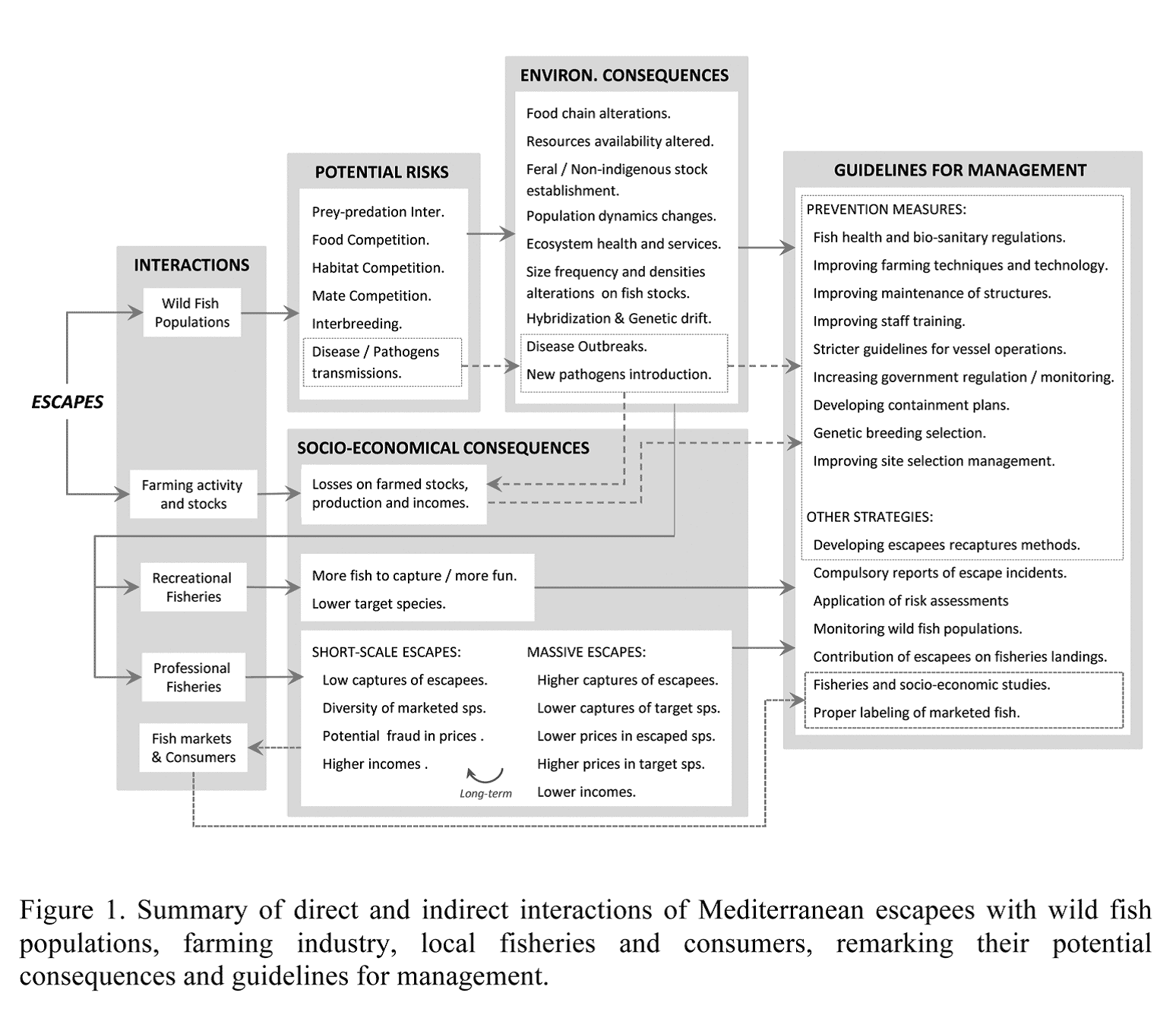Their related impacts are likely to happen and even increase during next years if measurements to prevent or reduce them are not taken into account on aquaculture management (Arechavala-Lopez 2012). Thus, the knowledge acquired in this study from reviewed literature about the potential environmental and socio-economic effects of escapees in different sectors will help us to discuss the need for improvement and application of further management tools and measures to prevent and reduce escapees and their impacts, and therefore, to assure a development of sustainable aquaculture activity.
Material and Methods
Information related with sea bream and sea bass escaped from open-sea cages, as well as their potential interactions with the Mediterranean marine environmental and related sectors (farmers, fishermen, consumers, etc.) were mainly collected from the European project “Prevent-Escape” (7th Framework European Commission), but also from other published literature. In addition, the existent available information from internal reports and grey literature from different Mediterranean countries
was also reviewed when possible. Finally, a general scheme with the most important direct and indirect interactions, consequences, guidelines and strategies for management were established.

Results and Discussion
The resulting information from this study is summarized in Figure 1. Firstly, the farmed escapees interact directly with wild fish populations, where it was demonstrated that they are able to predate on other species, and compete for habitat and food resources (Arechavala-Lopez et al. 2012). Although it was not demonstrated, it is suggested that escapees can compete for mating with their wild conspecifics and interbreed, since they co-occur in natural feeding and spawning areas.
Moreover, escapees can act as vector of pathogens and diseases transmission, increasing their range of distribution within native populations (Arechavala-Lopez et al. 2013). Therefore, sea bream and sea bass escapees might lead to a wide number of serious negative consequences to the marine environment. For instance, among the most important can be found: alterations in the food chain, modifications in the availability of different resources to native individuals, establishment of feral or non-indigenous fish stocks, changes in the dynamic of local populations and fish stocks of fishing interest, variations on the ecosystem health and services, genetic drift and hybridization with wild congeners, and disease outbreaks and new pathogens introduction.
In addition, escape events can also lead to economic losses to farmers, directly through escape events, but also indirectly through potential disease transmission and outbreaks since escapees could transmit some infectious pathogens to neighbouring fish-farms through their movements among facilities (Arechavala-Lopez et al. 2011, 2012, 2013). Moreover, escape-driven declines in wild fish populations are more likely to affect indirectly commercial fishing interests. Furthermore, the captured escapee can be mislabelled in some of the steps through the market chain (from fishermen to final fish market),
and consequently, the main affected of this fraud are the consumers (Arechavala-Lopez 2012).
Therefore, it is evident that there are significant risks to ecosystems through escapes from aquaculture and that management measures should be taken to eliminate or minimize those risks, which ensures that economic, social and ecological benefits from aquaculture are jointly achieved. These management measures should be included within governmental monitoring and regulations,
improving the present legislation concerning fisheries, human health and food safety taken into account the environmental and socio-economic risk of escapees, to ensure that aquaculture development is economically efficient and causes minimal impact.
October 2013




